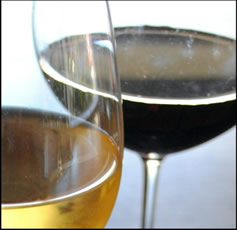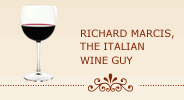Angelo Gaja Receives 2015 Lifetime Achievement Award from Wine Enthusiast Magazine.
Italian winemaker Angelo Gaja, one of the most prestigious and iconic names in Italian viticulture, was recently awarded the 2015 “Lifetime Achievement Award” from Wine Enthusiast magazine. This distinguished award is in recognition of Gaja’s numerous innovative wine making achievements during his 50 year career. This includes his initiatives in implementing innovative winemaking techniques and cellaring strategies to improve quality and also promoting and enhancing the image of Italian wines on the world stage.
The Gaja winery was founded in 1859 in the town of Barbaresco in the Piedmont region by Angelo’s great-grandfather, Giovanni Gaja. With an emphasis on quality and some astute marketing initiatives the family winery prospered and grew, especially after World War II when it acquired some prime vineyard properties at attractive prices in the Langhe district, the home of both Barolo and Barbaresco.
The family-owned and operated winery is the area’s oldest producer. Angelo Gaja is the current owner and manager and is the fourth generation of the Gaja family to lead the winery.
Born in 1940, Angelo went off at a relatively young age to study wine making at the Enological Institute in Alba and then to the University of Montpellier in France. He also studied at the University of Turin where he received a master’s degree in Economics. To polish his formal wine education he traveled throughout Europe and apprenticed at wineries in Burgundy and the Languedoc regions where he picked up a broad winemaking education.
In 1961, at 21 years of age, he joined the family wine making business and worked alongside his father. Over the years he introduced several  innovative practices to the tradition-bound Piedmont wine-making region. This included the practice of green harvests and introduction of French barriques in the ageing process. Gaja is also credited with being the first in the region to utilize temperature-controlled fermentation tanks and to introduce the concept of malolactic fermentation as a formal component of the vinification process. He was also the first in the Piedmont to offer single-vineyard, or cru wines, and grand cru prices for wines. He was also the first to plant French grape varieties like Cabernet Sauvignon, Merlot and Chardonnay in vineyards previously dedicated to Nebbiolo and other native varieties.
innovative practices to the tradition-bound Piedmont wine-making region. This included the practice of green harvests and introduction of French barriques in the ageing process. Gaja is also credited with being the first in the region to utilize temperature-controlled fermentation tanks and to introduce the concept of malolactic fermentation as a formal component of the vinification process. He was also the first in the Piedmont to offer single-vineyard, or cru wines, and grand cru prices for wines. He was also the first to plant French grape varieties like Cabernet Sauvignon, Merlot and Chardonnay in vineyards previously dedicated to Nebbiolo and other native varieties.
While these initiatives are commonplace and generally accepted today, they were considered anathema to most Piedmont vintners at that time. The practice of green harvests which consists of short-pruning vines and lowering grape yields substantially in order to improve quality - unheard of in Italy at that time - and introduction of French barriques in the ageing process were especially controversial and bitterly resisted in the early years by local producers. Angelo’s father was less than impressed but nonetheless permitted him to move ahead on these pioneering initiatives. And the rest, as they say, is history.
Angelo Gaja is generally credited with introducing techniques that revolutionized winemaking in the Piedmont, raising the image of Italian wines around the world and in the process inspired a new generation of winemakers across Italy. In the process he built the Gaja winery into a regional winemaking powerhouse.
Feeling that Italian wines lacked the respect they deserved in the international markets he wanted to show the world that Italy could produce great wines from its native grape varieties. He did this the hard way - he traveled throughout Europe and then America, personally pitching his portfolio of wines to sommeliers at upscale restaurants and buyers for boutique wine shops.
But he sold not only Gaja but Italy. He thought it important to publicize Italy’s rich and diverse wine history and that Italy was producing great wines that can go head-to-head with top wines from France and the U.S. Gradually, Italian wines began appearing on the wine lists of top restaurants and on wine shop shelves. As sales began to rise, new markets for Italian wines opened in the U.S., South America and Japan and then Russia and China.
He still remains active in managing his family’s wine operations which now includes wineries in Montalcino and in Bolgheri on the Tuscan coast. He also has a successful business that imports wines from the rest of Europe, the U.S. and other prime wine markets.
However, after a half-century of producing and marketing, he is passing on some of his responsibilities to the next generation of the Gaja family. He has three children and his oldest child, his daughter Gaia, is assuming greater responsibilities and frequently appears with her father at high-visibility wine trade functions and public conferences.
The lifetime achievement award is well deserved. While many individuals and personalities have contributed to Italy’s wine renaissance, there is little question that Angelo Gaja’s singular initiatives have been instrumental in elevating Italian wines from an afterthought to the top of the world’s wine list.
You can read the actual presentation of the award from Wine Enthusiast magazine to Angelo Gaja here.
©Richard Marcis
January 4, 2016
Return to About Italian Wines
Help keep this website ad-free and independent.
Consider making a contribution to support the work of WineWordsWisdom.com.


